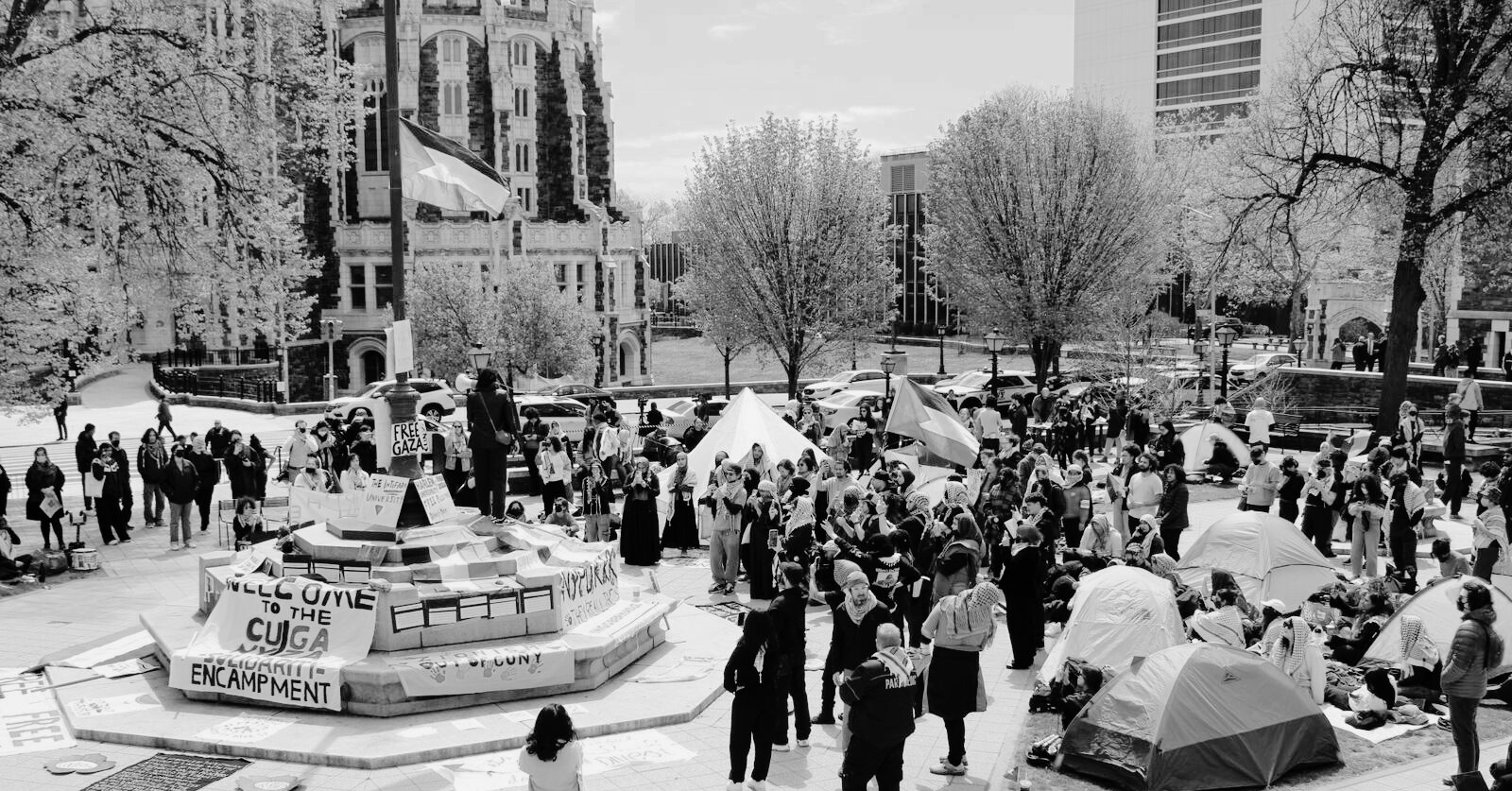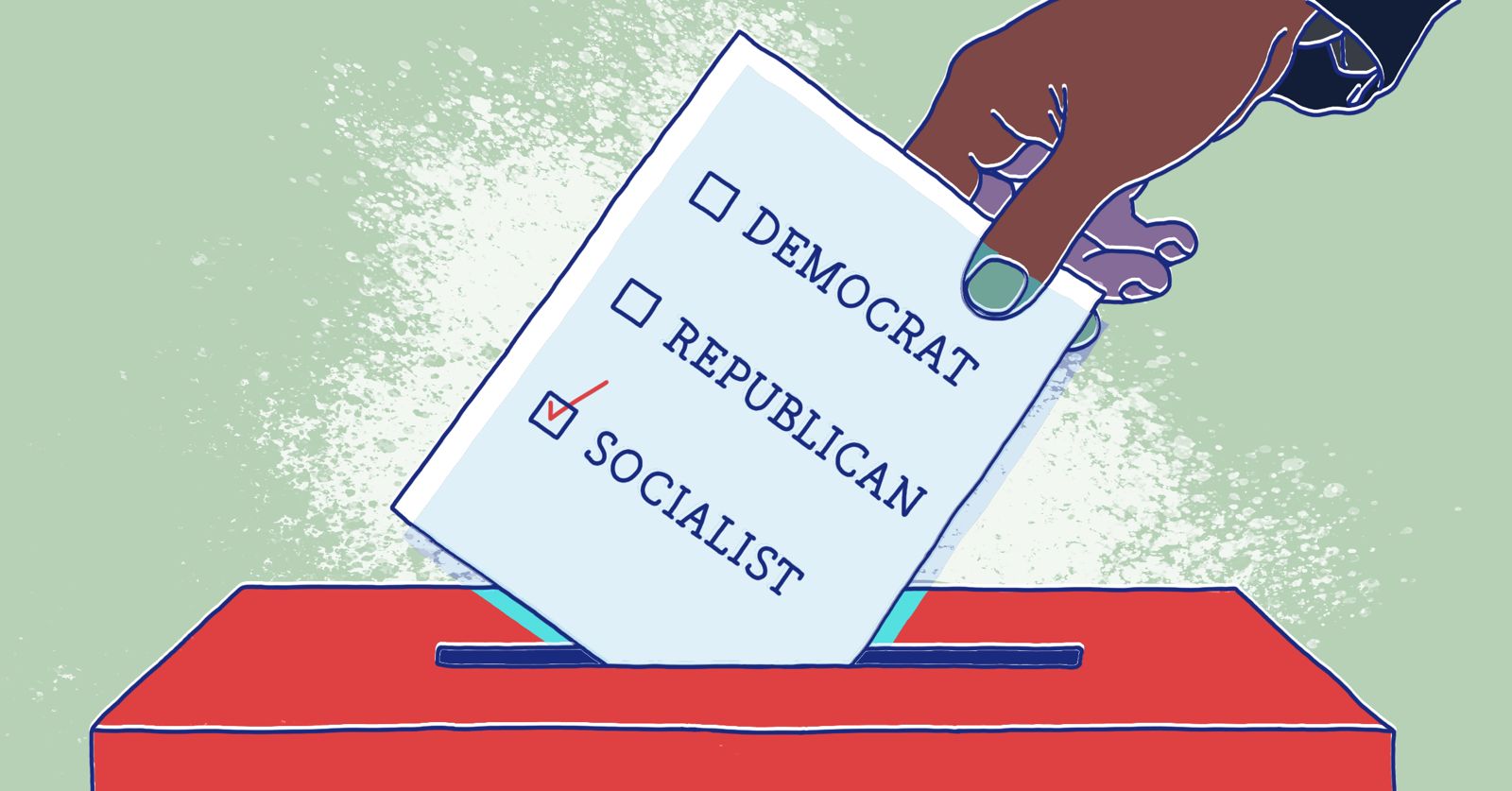Students all over the country are joining the Palestinian solidarity movement. Many of them have launched tent encampments in high visibility areas of their schools and are looking for creative outreach methods and programming ideas to grow and enliven their occupations. Here’s a list of tactics — some of which are inspired by the already existing camps — and a basic framework to think about which ones to use in your context.
- Canvassing dorms & other student housing
- Announcements at the start or end of classes
- Tabling
- Flyering in dining halls, dorms, outside big lecture halls
- Marches around campus
- Rallies
- Teach-ins
- Concerts, dances, film screenings
- Soft pickets
- Dining hall announcements
- College radio takeovers
- Class on the picket line/at the camp
- Political theater
- Art builds
- Organizing parent and future alumni petitions
- Postering the campus
- Banner drops
- March on the administrators’ offices
- Book/literature/art exchanges
- Walkouts from lectures
- Potlucks with all the ethnic groups on campus
- Invite ethnic/religious/cultural/unions/political groups to co-host events at your camp
- Birddogging: Get decision makers on the record. Have one person recording and one person following the target asking them questions about their lack of action or support around an issue
- Flea markets
- A tactic used by the Berkeley Free Speech Movement (1964-65) organizers: For students that have been retaliated against for committing X bullshit offense, organize a petition of hundreds and thousands of students who have also done X. (Obviously the movement will have to debate whether or not this tactic will be effective — if it will likely threaten even more students, or if it will help increase awareness of the university’s unjust and discriminatory retaliation and shift public sentiment to the side of the Gaza solidarity movement, or if there is enough safety in numbers to do it, etc.)
- Analyzing the lyrics of songs like “Solidarity Forever” and other protest songs
- Popcorn reading and discussions of articles or political speeches
- Interviews and “vlogs”
A Framework for Choosing Tactics
The forces we are up against are very powerful. In order to win our demands, we need a mass, confrontational, pro-Palestnian movement — one that can defeat the forces of reaction at home and abroad. It’s up to activists on the ground to decide which tactics are best for building the strongest possible movement for Palestinian liberation.
Here are some considerations that may factor into our decisions about which tactics to use:
- Growth: Does the tactic grow our numbers? Does it help us reach new constituencies? Does it create more possibilities for us to collaborate with other groups (e.g. labor unions and faculty associations)?
- Note that even though the encampments are a high profile tactic, that doesn’t mean your occupation will automatically grow. Some people will be supportive of what you’re doing but don’t see themselves as the activist type or don’t understand why they specifically need to get involved. Furthermore, in order to win our demands, we’ll need the solidarity of other sectors, namely workers.
- Consciousness: Does the tactic help consolidate pro-Palestinian opinion on our campuses and in our communities? Does the tactic increase people’s awareness of the hypocrisy and moral bankruptcy of those in power? Does the tactic teach people about how to fight back and win?
- Leadership development: Does the tactic help develop the critical thinking, organizational skills, and leadership capacity of the people in the movement?
- Safety: Does the tactic put people at risk (e.g. of bodily harm, losing future employment opportunities, or jeopardizing some students’ visa status)? Does it require a large number of volunteers to substantially decrease the risk?
- Morale: Is the tactic a source of new dynamism? Does the tactic build a more solidaristic culture? Does it increase people’s confidence in their personal, as well as the movement’s, ability to keep fighting?
These are just some considerations. No tactic will perfectly satisfy all of them. Depending on the moment, certain needs — growing the occupation’s numbers, developing more leaders, or boosting participants’ resolve to keep fighting — will be more urgent than others, though we should try to progress on all of these fronts at the same time.
It’s About Building a Powerful International Movement for Palestine
Some have expressed the concern that many of these tactics, especially the ones geared towards community building, are inherently distracting or self-serving. I agree that tactics can be poorly executed, especially when they are not evaluated in light of our ultimate goal and strategy to win. But I want to push back on the idea that these tactics inherently detract from building solidarity with Palestine.
All of us in the Gaza solidarity encampments agree that Palestinian liberation is the purpose of our efforts. It’s about creating a world that is safe, affirming, and supportive of all, not just the wealthy and powerful, or the members of one ethno-religious group. In order to create that world, we need to have the power to overcome the incredibly well-financed, well-connected forces that stand in our way: Netanyahu, the Israeli lobby, and Biden’s government just to name a few.
For everyday working people, that power has to come through organization. We do not have the same resources as our enemies. Instead, what we have is our numbers and the fact that we can withhold our labor. However, the leverage that is associated with numbers and labor cannot be wielded automatically. People first have to be won over to a pro-Palestine perspective, and they must develop the willingness and skills to fight back. Both of these things are hard to develop when our encampments feel stagnant, when people start to get demoralized, and when the work of organizing feels as dreary as the world we live in.
In these circumstances, it is helpful to use tactics that break up the rhythm of our organizing and are effective at attracting new constituencies to our cause. Things like dances, concerts, and festivals, then, are helpful tools to have in the arsenal. When we use these tactics, we should be extremely thoughtful and clear: Is what we are doing empowering us to struggle in solidarity with Palestinians? Will other people understand that that is what we are doing? Are we using tactics that large numbers of people can participate in, that help build our movement?
Ultimately, we need a resilient and spirited international movement for justice in Palestine. Let’s help ourselves to the tools that can build one.




